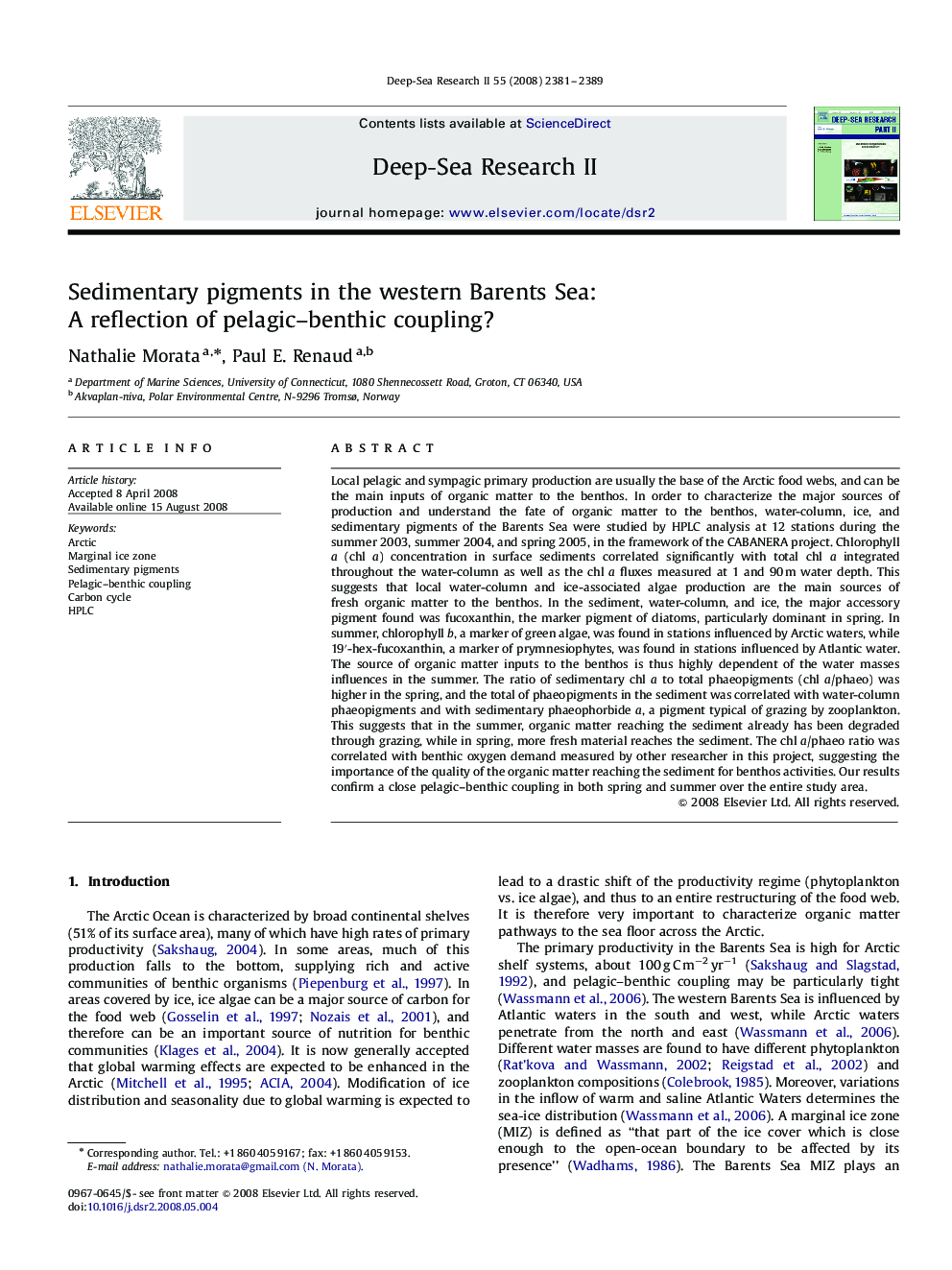| کد مقاله | کد نشریه | سال انتشار | مقاله انگلیسی | نسخه تمام متن |
|---|---|---|---|---|
| 4537960 | 1626491 | 2008 | 9 صفحه PDF | دانلود رایگان |

Local pelagic and sympagic primary production are usually the base of the Arctic food webs, and can be the main inputs of organic matter to the benthos. In order to characterize the major sources of production and understand the fate of organic matter to the benthos, water-column, ice, and sedimentary pigments of the Barents Sea were studied by HPLC analysis at 12 stations during the summer 2003, summer 2004, and spring 2005, in the framework of the CABANERA project. Chlorophyll a (chl a) concentration in surface sediments correlated significantly with total chl a integrated throughout the water-column as well as the chl a fluxes measured at 1 and 90 m water depth. This suggests that local water-column and ice-associated algae production are the main sources of fresh organic matter to the benthos. In the sediment, water-column, and ice, the major accessory pigment found was fucoxanthin, the marker pigment of diatoms, particularly dominant in spring. In summer, chlorophyll b, a marker of green algae, was found in stations influenced by Arctic waters, while 19′-hex-fucoxanthin, a marker of prymnesiophytes, was found in stations influenced by Atlantic water. The source of organic matter inputs to the benthos is thus highly dependent of the water masses influences in the summer. The ratio of sedimentary chl a to total phaeopigments (chl a/phaeo) was higher in the spring, and the total of phaeopigments in the sediment was correlated with water-column phaeopigments and with sedimentary phaeophorbide a, a pigment typical of grazing by zooplankton. This suggests that in the summer, organic matter reaching the sediment already has been degraded through grazing, while in spring, more fresh material reaches the sediment. The chl a/phaeo ratio was correlated with benthic oxygen demand measured by other researcher in this project, suggesting the importance of the quality of the organic matter reaching the sediment for benthos activities. Our results confirm a close pelagic–benthic coupling in both spring and summer over the entire study area.
Journal: Deep Sea Research Part II: Topical Studies in Oceanography - Volume 55, Issues 20–21, October 2008, Pages 2381–2389